Jmsconn - 無標題

More Posts from Jmsconn and Others

Mammoth Hot Springs Mammoth Hot Springs - Impressed by the rock formations and their colors – white, yellow, gold, and orange! All these colors are due to the presence of bacteria and algae that flourish in the extremely hot waters of the springs. Over thousands of years they have formed terraces called travertine formations - Rain waters seep into the rocks, and once they reach a certain depth, they are heated by the action of boiling magma. They rise back to the surface of the earth. The waters at Mammoth Hot Springs are not expelled into the air. They cross the rocks up and deposit limestone sediments on the surface. The warm waters slowly flow from one basin to another, forming terraces as shown in the picture. It flows over some white limestone and orange travertine deposits. Mammoth Hot Springs is “journey to the center of Earth”, but outdoors!

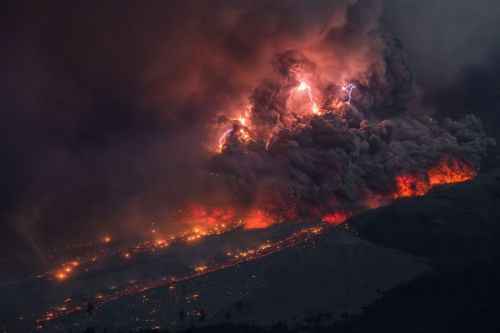
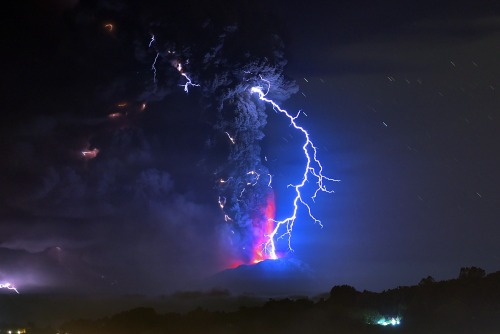
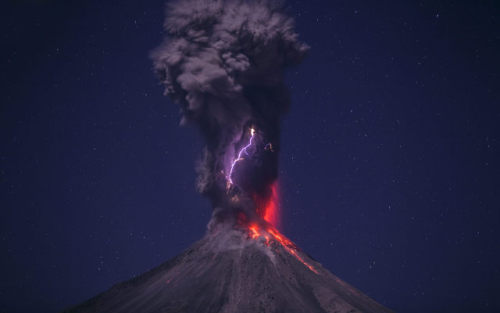
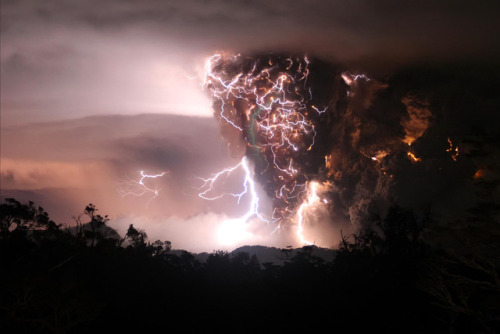
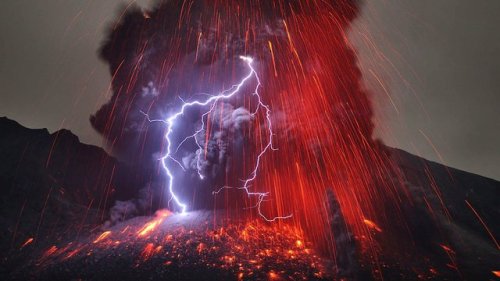
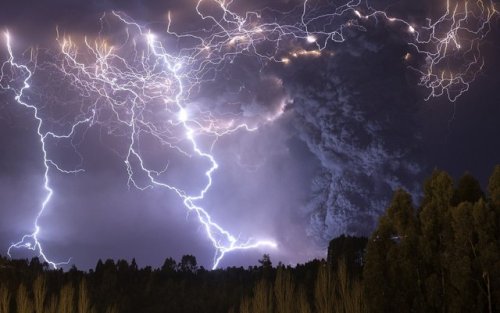
Dirty thunderstorm
A dirty thunderstorm (also volcanic lightning, thunder volcano) is a weather phenomenon that is related to the production of lightning in a volcanic plume.
A study in the journal Science indicated that electrical charges are generated when rock fragments, ash, and ice particles in a volcanic plume collide and produce static charges, just as ice particles collide in regular thunderstorms.
Volcanic eruptions are sometimes accompanied by flashes of lightning. However, this lightning doesn’t descend from storm clouds in the sky. It is generated within the ash cloud spewing from the volcano, in a process called charge separation.
source
images
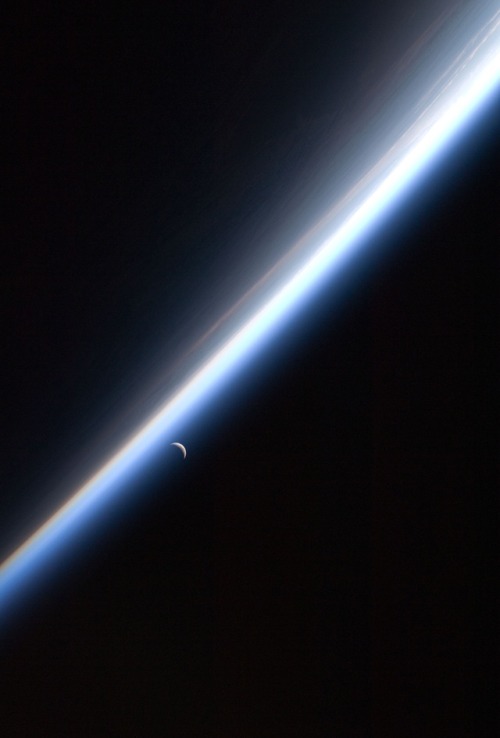
Crescent Moon and Earth’s Atmosphere Seen by International Space Station
Credit: NASA

The total solar eclipse of 02 July 2019 from La Serena, Chile.
Credit: Gwenael Blanck

2019 October 17
Moons of Saturn Image Credit: Cassini Imaging Team, SSI, JPL, NASA
Explanation: On July 29, 2011 the Cassini spacecraft’s narrow-angle camera took this snapshot and captured 5 of Saturn’s moons, from just above the ringplane. Left to right are small moons Janus and Pandora respectively 179 and 81 kilometers across, shiny 504 kilometer diameter Enceladus, and Mimas, 396 kilometers across, seen just next to Rhea. Cut off by the right edge of the frame, Rhea is Saturn’s second largest moon at 1,528 kilometers across. So how many moons does Saturn have? Twenty new found outer satellites bring its total to 82 known moons, and since Jupiter’s moon total stands at 79, Saturn is the Solar System’s new moon king. The newly announced Saturnian satellites are all very small, 5 kilometers or so in diameter, and most are in retrograde orbits inclined to Saturn’s ringplane. You can help name Saturn’s new moons, but you should understand the rules. Hint: A knowledge of Norse, Inuit, and Gallic mythology will help.
∞ Source: apod.nasa.gov/apod/ap191017.html




Titan, Enceladus, Tethys, Pandora, & Epimetheus. October, 2007.
NASA/JPL-Caltech/SSI/CICLOPS/Kevin M. Gill





Total Solar Eclipse, 2019. Credits: ESA/CESAR
-
 mleighsquickspot liked this · 5 years ago
mleighsquickspot liked this · 5 years ago -
 madmax76d reblogged this · 5 years ago
madmax76d reblogged this · 5 years ago -
 madmax76d liked this · 5 years ago
madmax76d liked this · 5 years ago -
 fagdykefrank liked this · 5 years ago
fagdykefrank liked this · 5 years ago -
 essie-and-the-boundless-sea liked this · 5 years ago
essie-and-the-boundless-sea liked this · 5 years ago -
 fanartofthelostcities liked this · 5 years ago
fanartofthelostcities liked this · 5 years ago -
 4zul-w0rld-blog liked this · 5 years ago
4zul-w0rld-blog liked this · 5 years ago -
 ruby-skylark liked this · 5 years ago
ruby-skylark liked this · 5 years ago -
 smallfryingpan liked this · 5 years ago
smallfryingpan liked this · 5 years ago -
 devourerofmugsofcoffe liked this · 5 years ago
devourerofmugsofcoffe liked this · 5 years ago -
 michigandrifter liked this · 5 years ago
michigandrifter liked this · 5 years ago -
 otherlandshark liked this · 5 years ago
otherlandshark liked this · 5 years ago -
 eastern-wind liked this · 5 years ago
eastern-wind liked this · 5 years ago -
 m-l-e-p liked this · 5 years ago
m-l-e-p liked this · 5 years ago -
 to-listening-stars liked this · 5 years ago
to-listening-stars liked this · 5 years ago -
 2020blaq liked this · 5 years ago
2020blaq liked this · 5 years ago -
 hollywoodundeadroger liked this · 5 years ago
hollywoodundeadroger liked this · 5 years ago -
 wisent15 liked this · 5 years ago
wisent15 liked this · 5 years ago -
 fallen-seraphim-srp liked this · 5 years ago
fallen-seraphim-srp liked this · 5 years ago -
 daisylovesrumble liked this · 5 years ago
daisylovesrumble liked this · 5 years ago -
 tmblrmademegetglasses liked this · 5 years ago
tmblrmademegetglasses liked this · 5 years ago -
 mmuehlfeld-blog liked this · 5 years ago
mmuehlfeld-blog liked this · 5 years ago -
 gia-is-a-punk-rocker liked this · 5 years ago
gia-is-a-punk-rocker liked this · 5 years ago -
 br0-0k liked this · 5 years ago
br0-0k liked this · 5 years ago -
 ulk78 liked this · 5 years ago
ulk78 liked this · 5 years ago -
 stefan13exe liked this · 5 years ago
stefan13exe liked this · 5 years ago -
 iruiigyou reblogged this · 5 years ago
iruiigyou reblogged this · 5 years ago -
 the-morfran-nebulous reblogged this · 5 years ago
the-morfran-nebulous reblogged this · 5 years ago -
 peyman-akbari liked this · 5 years ago
peyman-akbari liked this · 5 years ago -
 luciferspoison liked this · 5 years ago
luciferspoison liked this · 5 years ago -
 dandelionwomen reblogged this · 5 years ago
dandelionwomen reblogged this · 5 years ago -
 river-mist reblogged this · 5 years ago
river-mist reblogged this · 5 years ago -
 nlockett reblogged this · 5 years ago
nlockett reblogged this · 5 years ago -
 nlockett liked this · 5 years ago
nlockett liked this · 5 years ago -
 rainbow-emotional reblogged this · 5 years ago
rainbow-emotional reblogged this · 5 years ago
